20 Great Places to Retire Near the Mountains
Retirement may afford you the perfect time to gain some perspective in life—and what better place to do it than in the mountains?
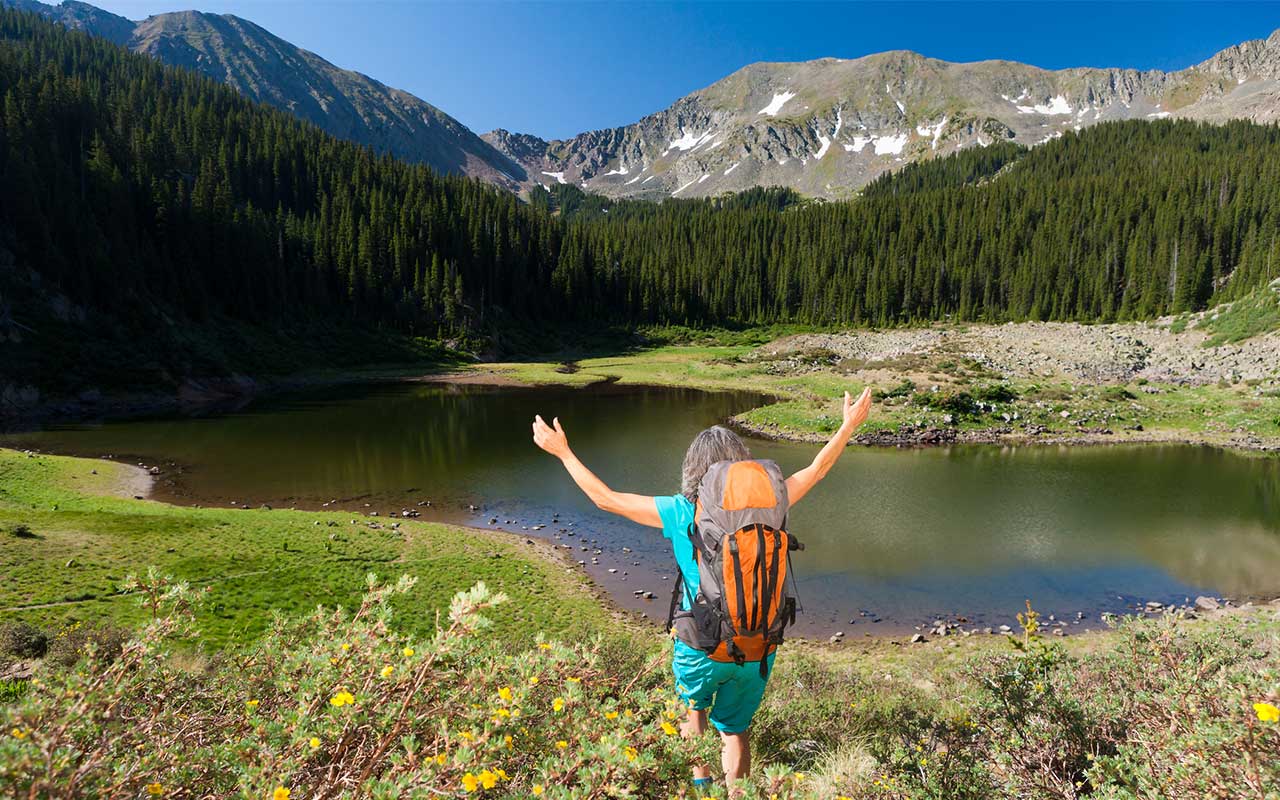

Retirement may afford you the perfect time to gain some perspective in life—and what better place to do it than in the mountains? On top of the scenic views, higher altitudes also give you cooler weather and less humidity. And America's mountain majesties can be found in many locations all over the country.
We highlighted one great retirement destination in each state, taking into account living costs, safety, median incomes and poverty rates for retirement-age residents, as well as residents' sense of well-being and the availability of recreational and health care facilities. Of our 50 picks, these 20 retirement spots across the U.S. offer the added benefit of nearby peaks and valleys to explore.
Disclaimer
The list is ordered alphabetically by state. See "How We Picked the Best Places for Retirement" at the end of the list for details on our data sources and methodology.
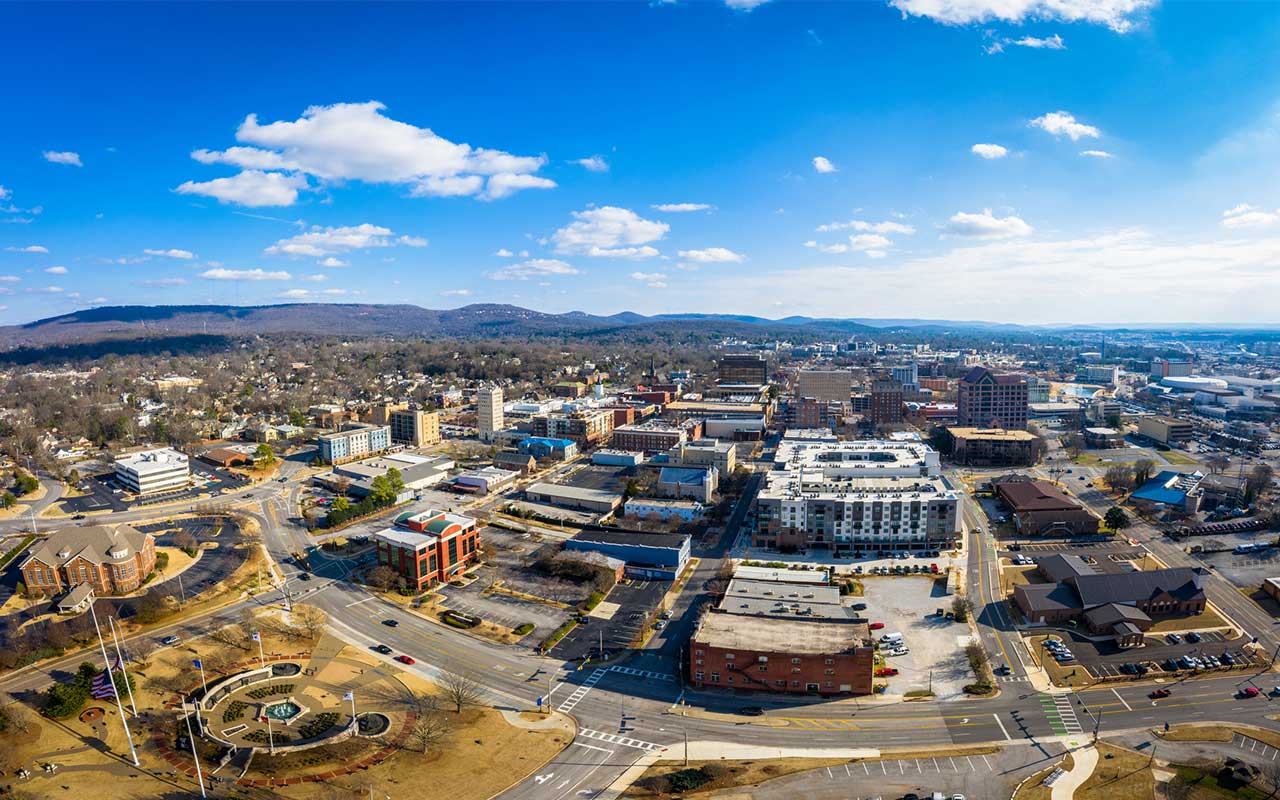
Huntsville, Ala.
- City population: 190,501
- Share of population 65+: 15.2% (U.S.: 14.9%)
- Cost of living for retirees: 6.1% below the national average
- Average income for population 65+: $51,853 (U.S.: $56,453)
- Community score: 63.3 (U.S.: 61.9)
- State's tax rating for retirees: Tax Friendly
As one of the 10 Cheapest States Where You'll Want to Retire, the Heart of Dixie boasts many great spots for affordable living. And Huntsville, in northern Alabama, is one of the best. It offers all the low-cost, low-tax advantages as the rest of the state, but adds more generous incomes among retirement-age residents. The average household income for 65+ households in Alabama is $46,318, according the Census Bureau.
Home to NASA's Marshall Space Flight Center, the Redstone Arsenal and the Huntsville campus of the University of Alabama, the city offers a robust economy and a highly educated population. There are plenty of cultural attractions, from a sculpture trail to a symphony orchestra. Opportunities for outdoor recreation abound, as well: Hiking and biking paths around and throughout the city include the advanced slopes of Monte Sano Mountain (meaning "Mountain of Health" in Spanish), which has an elevation of 1,621 feet. Or you can enjoy more leisurely paths of the Huntsville Greenway system. And Alabama at-large offers many of Florida's popular retirement attractions—warm weather, nice beaches and plenty of golf—all at a typically lower price.
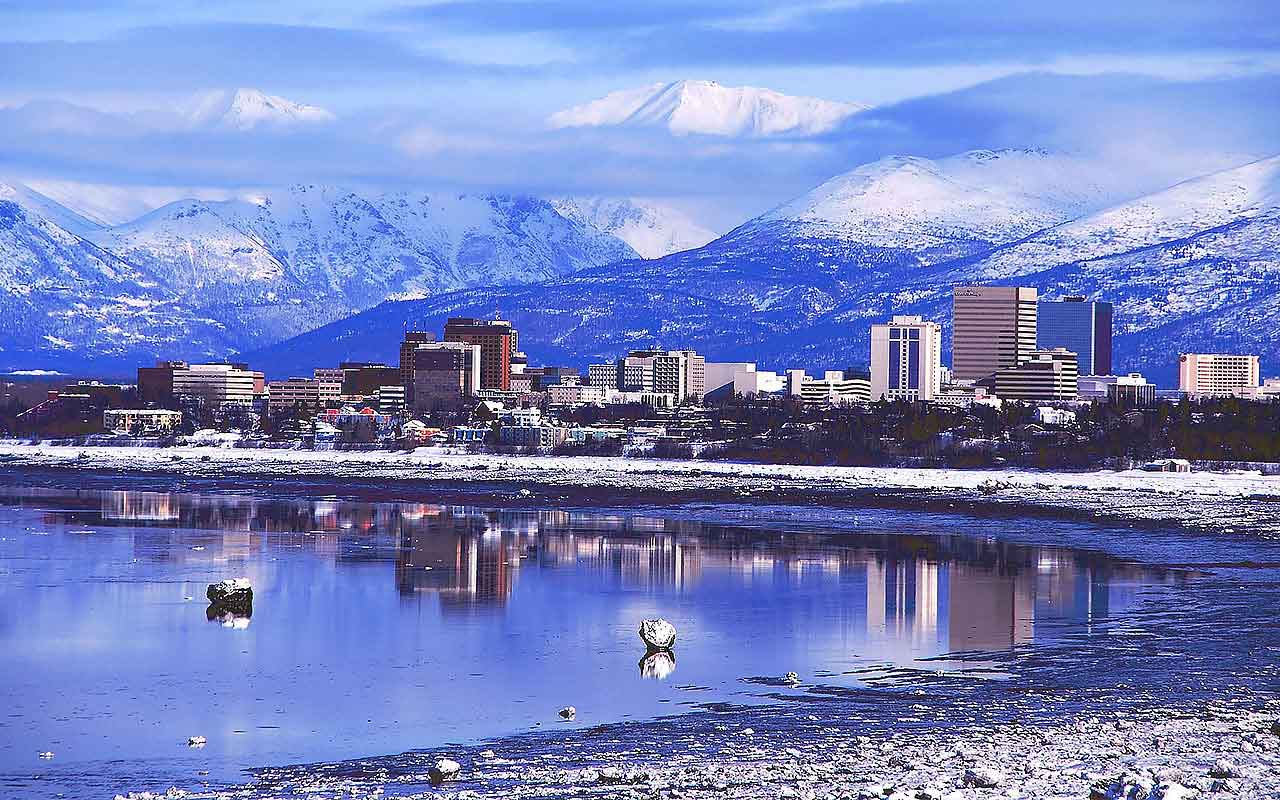
Anchorage, Alaska
- City population: 298,225
- Share of population 65+: 9.4%
- Cost of living for retirees: 26.8% above the national average
- Average income for population 65+: $70,291
- Community score: 62.1
- State's tax rating for retirees: Most Tax Friendly
Older folks don't seem too interested in facing the Last Frontier in retirement. Only 10.1% of the entire state's population is age 65 and up compared with 14.9% of the whole U.S. But if you crave adventure—and don't mind long winters and vast swaths of wilderness—it pays to live in Alaska. Literally. A state fund fueled by oil wealth gives all permanent residents an annual dividend. In 2018, the payment was $1,600 per person.
And residents could certainly use the extra cash. Living costs throughout Alaska are significantly higher than is typical across the continental U.S. But Anchorage is the least expensive metro area in the state, according to the Council for Community and Economic Research. Plus, being the largest city in Alaska, it offers more amenities including numerous theaters, museums and shopping centers, on top of all the outdoor recreation you'd expect. The Chugach State Park alone offers 155 peaks—ranging from Flattop Mountain with an elevation of 3,245 feet to Mount Marcus Baker at 13,094 feet—with endless opportunities for hiking and ice climbing. It also has an abundance of health care facilities, more than 41 establishments per 1,000 seniors in the metro area compared with just about 19 per 1,000 seniors in the U.S.
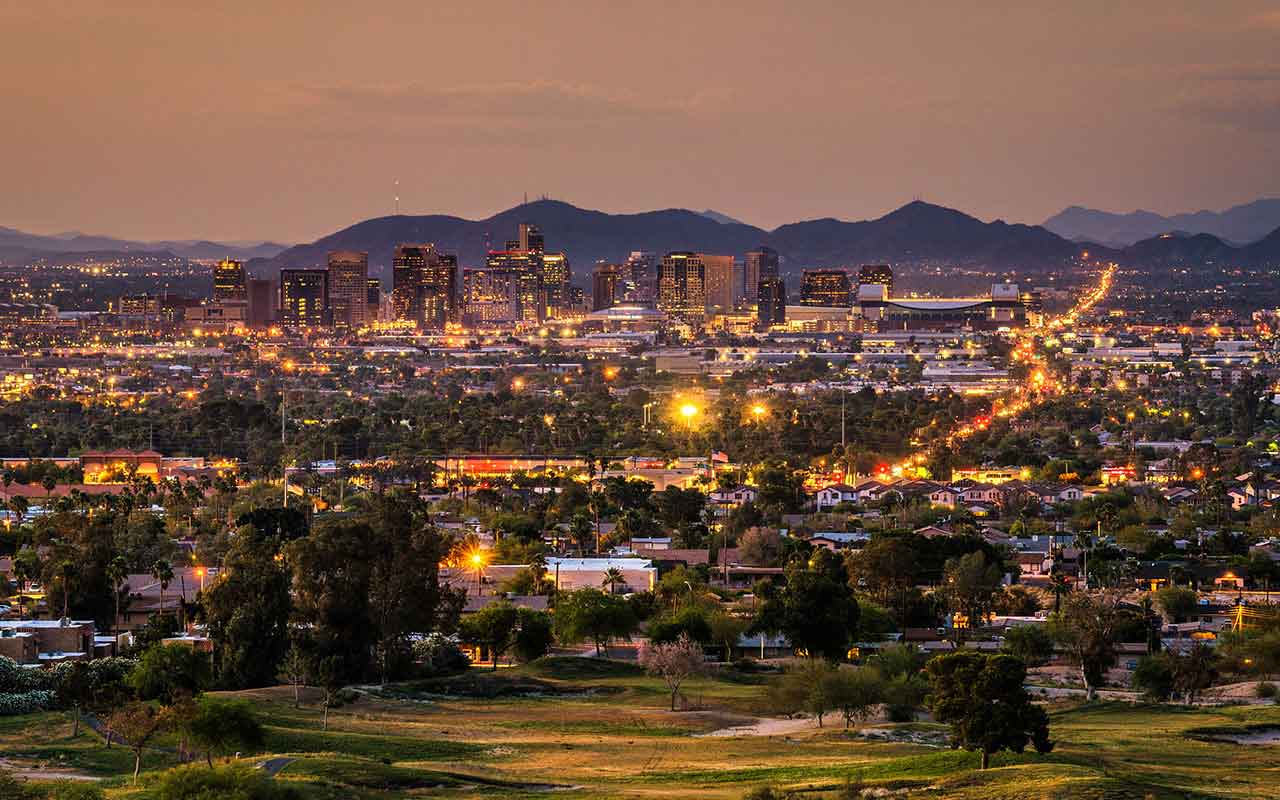
Phoenix
- City population: 1.6 million
- Share of population 65+: 10.0%
- Cost of living for retirees: 1% below the national average
- Average income for population 65+: $54,681
- Community score: 62.5
- State's tax rating for retirees: Mixed
Undoubtedly, many of you have considered the Grand Canyon State for its retiree-friendly climate and beautiful natural scenery. Unfortunately, the financial setting is not quite as picturesque: Average living costs in Arizona are 12% above the national average, according to Sperling's BestPlaces, while median incomes for seniors with earnings are below average at $50,254. Phoenix, though, offers a pocket of affordability, plus typically higher incomes.
And being the capital city, you can find plenty of attractions to keep you busy—world-class restaurants, professional sports teams and an array of museums, theaters and other cultural attractions. Of course, outdoor enthusiasts have more than enough to enjoy, too: The Phoenix Mountains Preserve alone, including Piestewa Peak (2,608 feet) and Camelback Mountain (2,707 feet), offers many hiking and biking trails just 20 minutes from downtown. And you can find even more to explore in nearby Scottsdale, Glendale and Tempe.
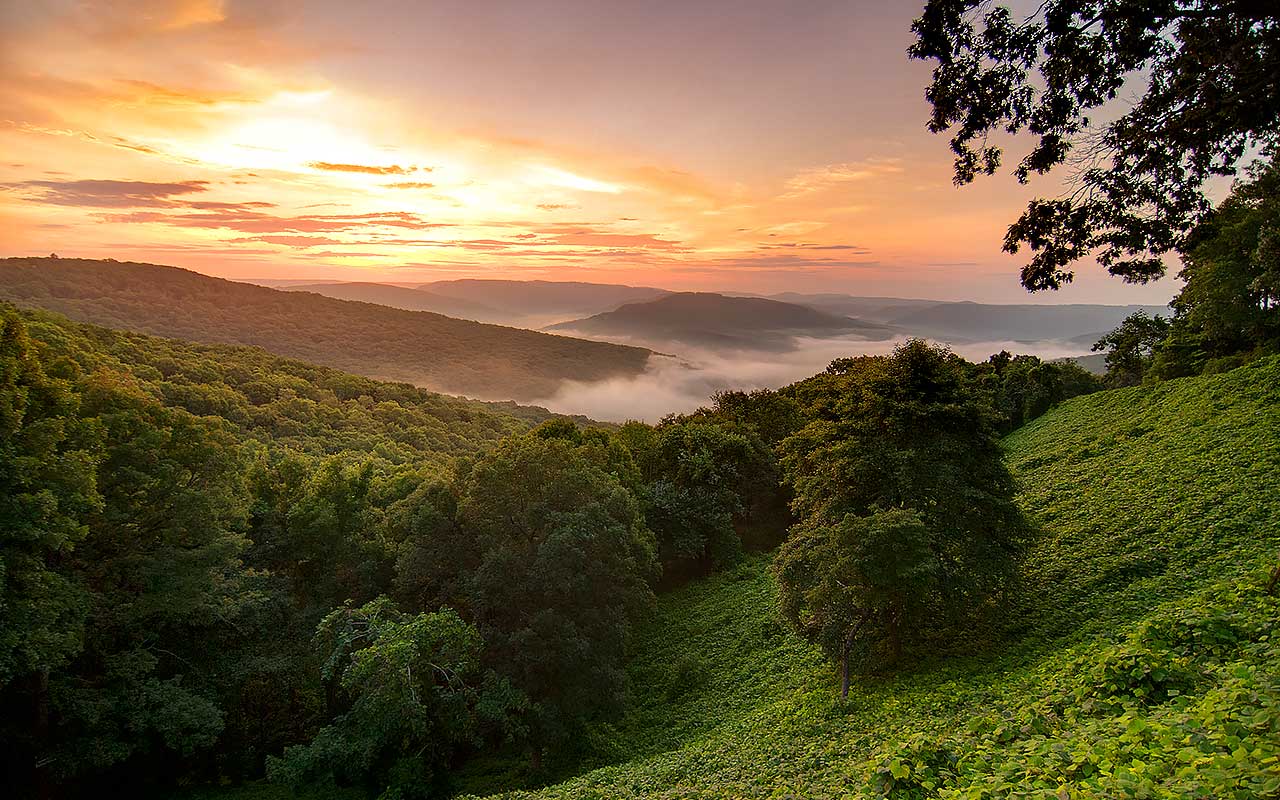
Fayetteville, Ark.
- City population: 81,889
- Share of population 65+: 9.1%
- Cost of living for retirees: 13.8% below the national average
- Average income for population 65+: $85,436
- Community score: 66.3
- State's tax rating for retirees: Not Tax Friendly
The metro area of Fayetteville, which includes Springdale, Rogers and Bentonville, offers low costs but plenty of attractions. The surrounding Ozark Mountains afford residents outdoor recreation and natural wonders to enjoy while the downtown area, home to the University of Arkansas, provides restaurants, shops and a lively music and arts scene, including the Walton Arts Center.
Locals seem happy with what they have at their fingertips. Fayetteville ranks 11th for community well-being on the Gallup-Sharecare Well-Being Index with residents reporting high levels of liking where they live, feeling safe and having pride in their community.

Carlsbad, Calif.
- City population: 113,147
- Share of population 65+: 16.0%
- Cost of living for retirees: 40.6% above the national average
- Average income for population 65+: $70,348
- Community score: 64.3
- State's tax rating for retirees: Mixed
Part of the San Diego metro area, Carlsbad offers a small-city feel with easy access to big-city amenities alongside seven miles of Pacific Ocean coastline. You can also find 40 parks and more than 50 miles of hiking trails, including the variety of options covering the Rancho La Costa Preserve's Denk Tank Mountain, the highest point in Carlsbad. The city offers a full calendar of artsy offerings, too, including Foreign Film Fridays in the spring and free concerts in the summer. Not that there are really seasons in Carlsbad: Throughout the year, average highs fall between 62 and 71 degrees Fahrenheit, and average lows only go down to between 45 and 64 degrees Fahrenheit, according to Weather.com. And rainy days are rare. Plus, you can choose among a host of retirement communities with ocean views.
Of course, you have to be able to afford it. Like much of California—where living costs are 69% above the national average, making it the second-most expensive state in the country behind only Hawaii—Carlsbad and the whole metro area is a pricey place to live. For example, the median home value in the U.S. is $229,000, according to Zillow; in California, it's $548,600; and in Carlsbad, it's (brace yourself) $860,700. And taxes throughout Cali also weigh heavily on your wallet.

Denver
- City population: 678,467
- Share of population 65+: 11.2%
- Cost of living for retirees: 9.4% above the national average
- Average income for population 65+: $59,601
- Community score: 63.4
- State's tax rating for retirees: Mixed
The Mile High City is an obvious choice for mountain lovers. Denver offers 14,000 acres of parks nearby in the foothills of the Rocky Mountains, with ample opportunity for hiking, biking and exploring. No wonder the local senior population is well known for being health and active, part of why the Milken Institute, a think tank, ranked the metro area the 12th best big city for successful aging.
Other strengths of the area include high employment and economic stability, as well as quality infrastructure, with well-funded transit for older adults, highly rated nursing homes and ample continuing care. Indeed, the Denver metro area is home to more than 24 health care facilities per 1,000 seniors, compared with just about 19 per 1,000 seniors in the U.S.
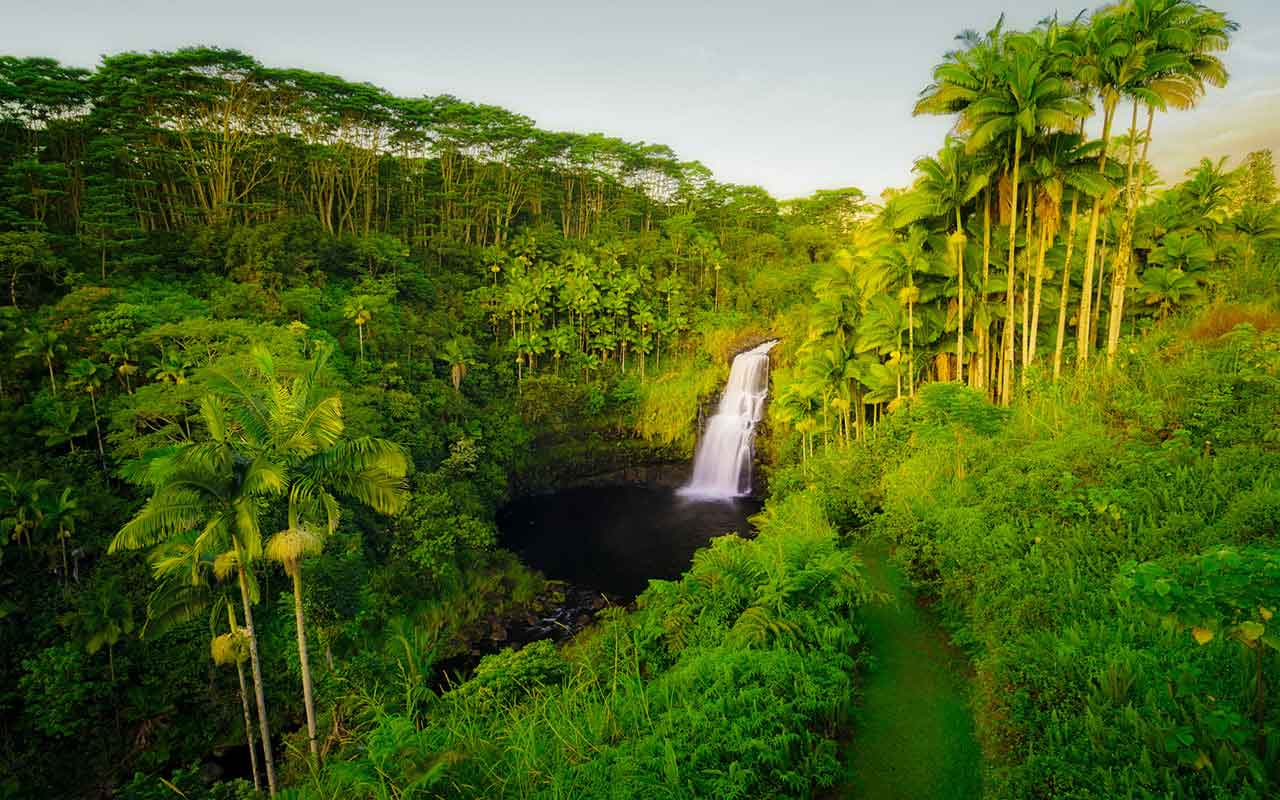
Hilo, Hawaii
- City population: 45,703
- Share of population 65+: 18.5%
- Cost of living for retirees: n/a
- Average income for population 65+: $54,503
- Community score: n/a
- State's tax rating for retirees: Tax Friendly
Hawaii is well known for its beautiful beaches, enviable climate and high prices. In Hilo, on the Big Island, the overall cost of living is 36.4% above the national average, according to Sperling's BestPlaces. But at least that's more affordable than capital city Honolulu, on Oahu, where living costs are a steep 101.1% above the national average. The median home value in Hilo is $339,800, according to Zillow—still pricey, to be sure, compared with the U.S. median of $229,000, but much more reasonable than the $676,100 median in Honolulu.
And the local lifestyle is still priceless. The colonial town's mood is quiet and calm, but its location on the eastern coast of the island and near active volcano Mauna Loa offers plenty of opportunities for adventure. You can explore rainforests and waterfalls, as well as Hawaii Volcanoes National Park. In the downtown and waterfront areas, enjoy galleries, shops, restaurants and museums, including the 'Imiloa Astronomy Center.
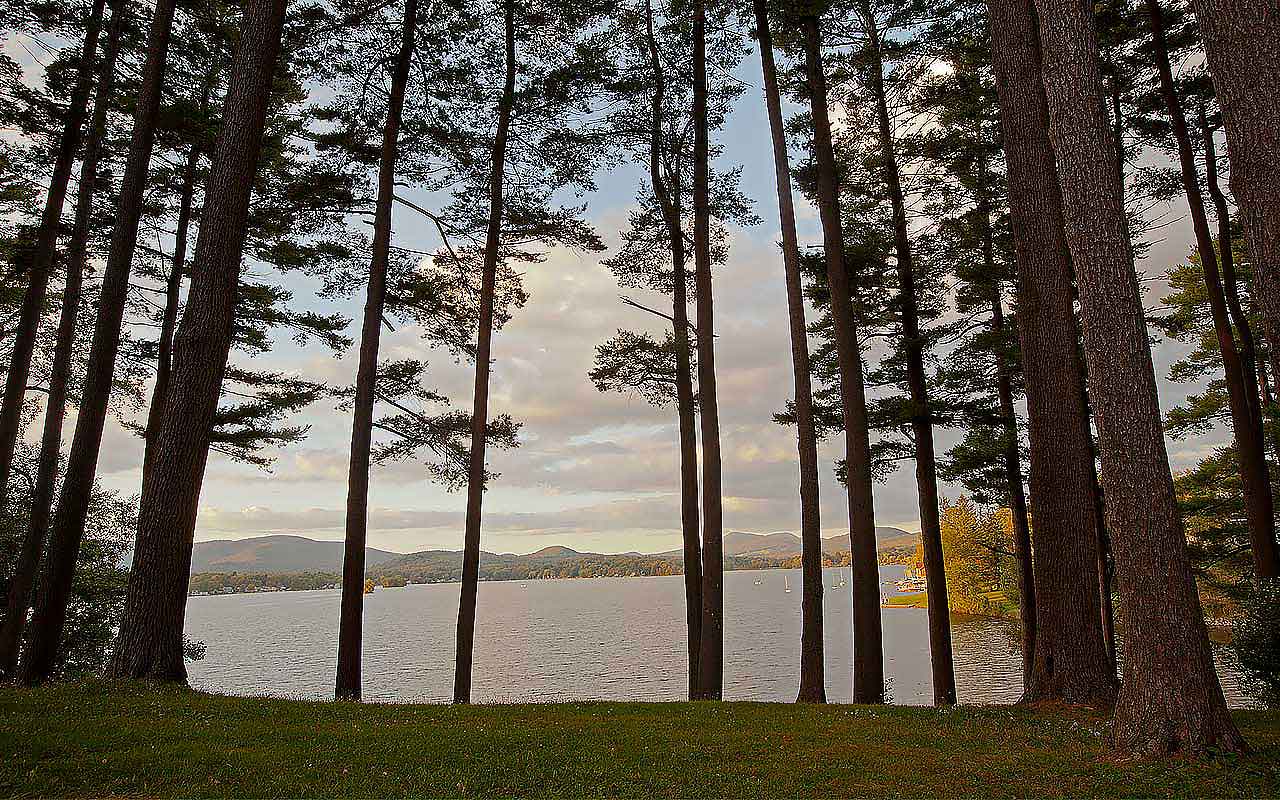
Pittsfield, Mass.
- City population: 43,289
- Share of population 65+: 19.0%
- Cost of living for retirees: 7.9% above the national average
- Average income for population 65+: $58,231
- Community score: n/a
- State's tax rating for retirees: Not Tax Friendly
New England is notoriously expensive, but Pittsfield, located in the western part of Massachusetts, offers a small pocket of relative affordability—more reasonably priced than Boston and Cambridge, where living costs are, respectively, 48.1% and 38.1% above the U.S. average. Housing is notably affordable: The median home value in the city is $173,200, compared with $407,400 for all of Massachusetts and $592,300 for Boston proper, according to Zillow.
Leaf peeping in the fall may be enough to draw you to the Berkshires, a range of the Appalachian Mountains. But you have plenty to enjoy all year round, including excellent sites for camping, fishing, hiking and skiing. Nearby, enjoy musical performances at the Tanglewood Music Center, the summer home of the Boston Symphony Orchestra. There’s also world-class art at the Clark Art Institute in Williamstown and the Massachusetts Museum of Contemporary Art (MASS MoCa, for short) in North Adams.
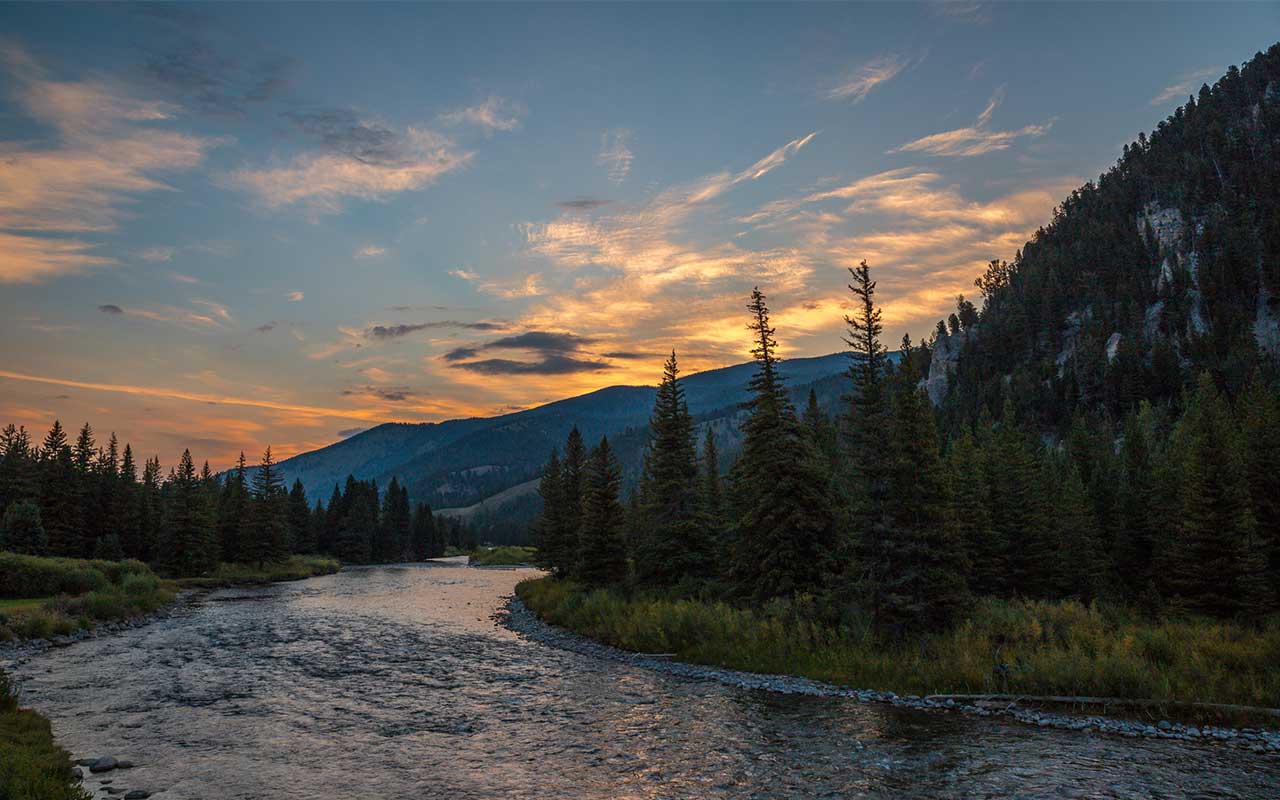
Bozeman, Mont.
- City population: 43,132
- Share of population 65+: 8.6%
- Cost of living for retirees: 3.2% above the national average
- Average income for population 65+: n/a
- Community score: n/a
- State's tax rating for retirees: Not Tax Friendly
Bozeman is in southern Montana, nestled in the Gallatin Valley and surrounded by majestic ranges and national forests. Yellowstone and Grand Teton national parks sit due south of Bozeman. The geography means you have to be comfortable hiking, mountain biking, skiing and backcountry exploring your way through retirement. Hunting and fishing are also popular local activities.
But don't expect total isolation. Montana State University's Bozeman campus is home to about nearly 17,000 students. Exuberant co-eds might not be the neighbors you pictured in your mountain-view retirement destination, but you may enjoy the dining, culture and entertainment options that come with a college town.
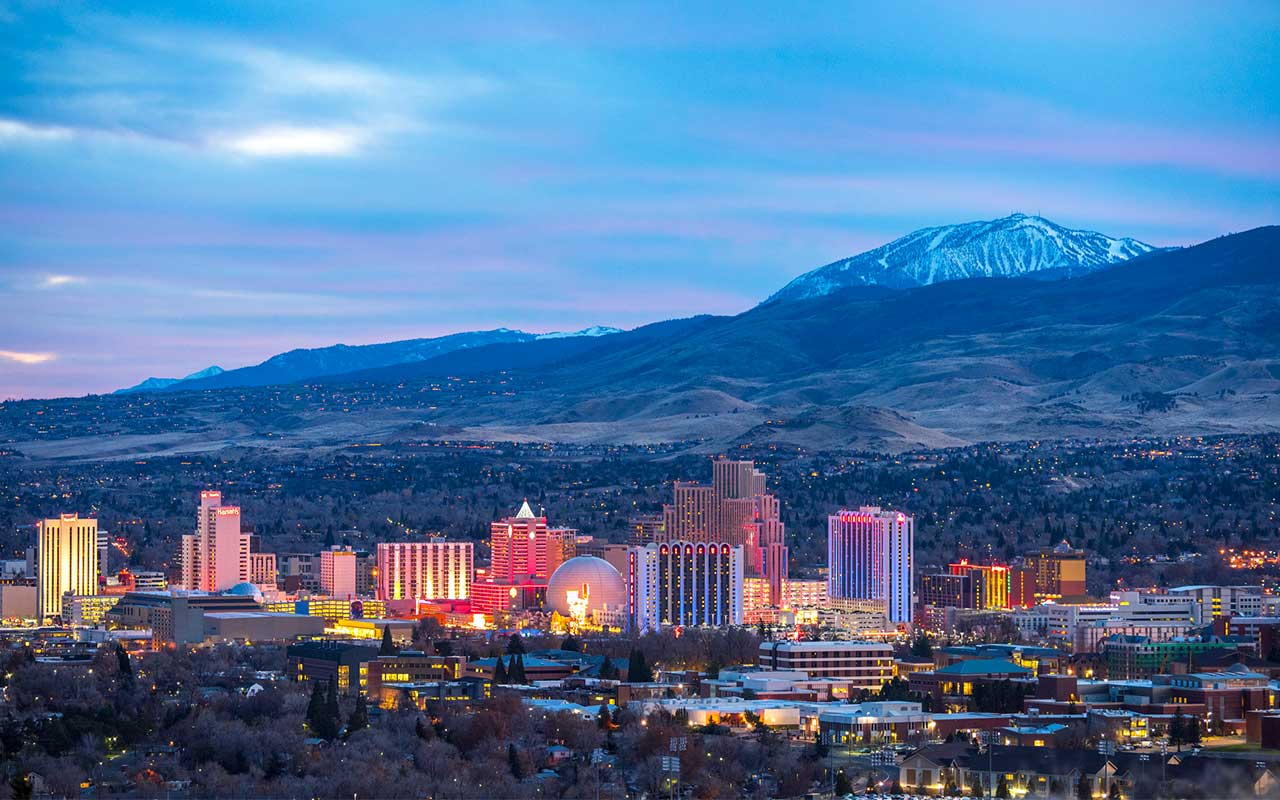
Reno, Nev.
- City population: 239,732
- Share of population 65+: 13.8%
- Cost of living for retirees: 10.4% above the national average
- Average income for population 65+: $51,061
- Community score: 61.2
- State's tax rating for retirees: Most Tax Friendly
Whether or not you like to gamble, retiring to Reno can make you feel like you've hit the jackpot. Boasting a small-town feel with big-city amenities, the locale proclaims itself "The Biggest Little City in the World." And it backs up the claim, offering a downtown full of restaurants, nightclubs, art galleries and music venues, on top of its well-known casinos.
Outdoor enthusiasts also win. The nearby Sierra Nevada mountain range and Lake Tahoe provide ample opportunities for hiking, biking and boating in warm weather, and skiing in winter. The area's resorts and marinas are also popular among residents of Gardnerville Ranchos, a small Nevada town near Lake Tahoe that's home to a surprising number of millionaires.
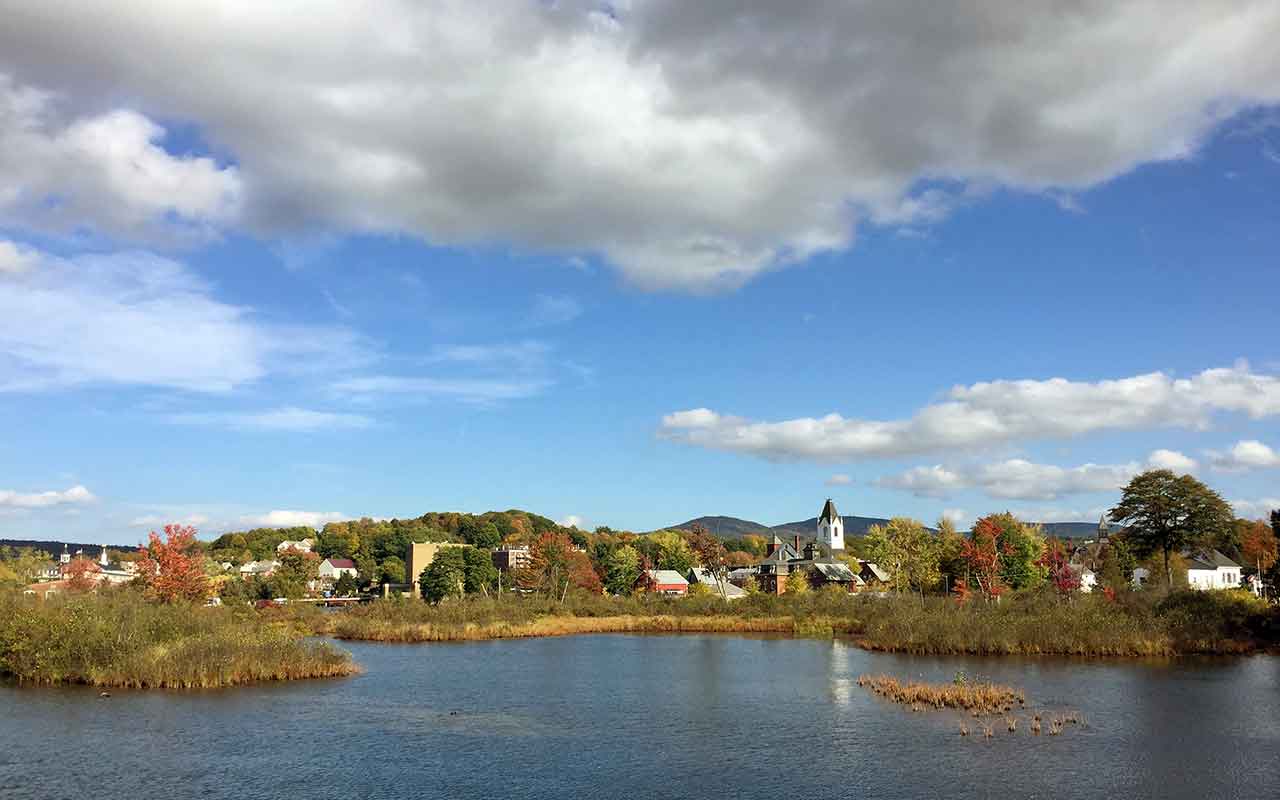
Laconia, N.H.
- City population: 16,237
- Share of population 65+: 20.5%
- Cost of living for retirees: n/a
- Average income for population 65+: n/a
- Community score: n/a
- State's tax rating for retirees: Most Tax Friendly
Tiny Laconia offers a big bargain for your retirement destination. The overall cost of living is 1.2% below the national average, according to Sperling's BestPlaces, making it much more affordable than Manchester—about 50 miles south—where living costs are 13.2% above average. But local average incomes are still high, averaging $71,605 for residents across all ages. That adds up to favorable odds for a balanced budget. And the Granite State's tax situation for retirees is solid, too.
Tucked between Lake Winnipesaukee and Winnisquam Lake, Laconia has been dubbed "The City on the Lake," home city to New Hampshire's Lakes Region. That means plenty of beaches and water-related activities for you in the warmer months. Other outdoor recreation abounds nearby, too. Gunstock Mountain Resort in neighboring Gilford, for example, offers camping, ziplining and snow sports, as well as fairs, events and dining options. Local crime may be worth noting: While the state sports a low rate of 1.99 violent crimes per 1,000 residents, Laconia's rate is 4.68, even slightly higher than the national median of 4 violent crimes per 1,000 residents, according to NeighborhoodScout.com. On the bright side, between 2009 and 2018, there have been only two murders in town, according to the community's police department. The site lists Parade Road-Old North Main Street and Weirs Beach-Lakeport as the safest neighborhoods in Laconia.
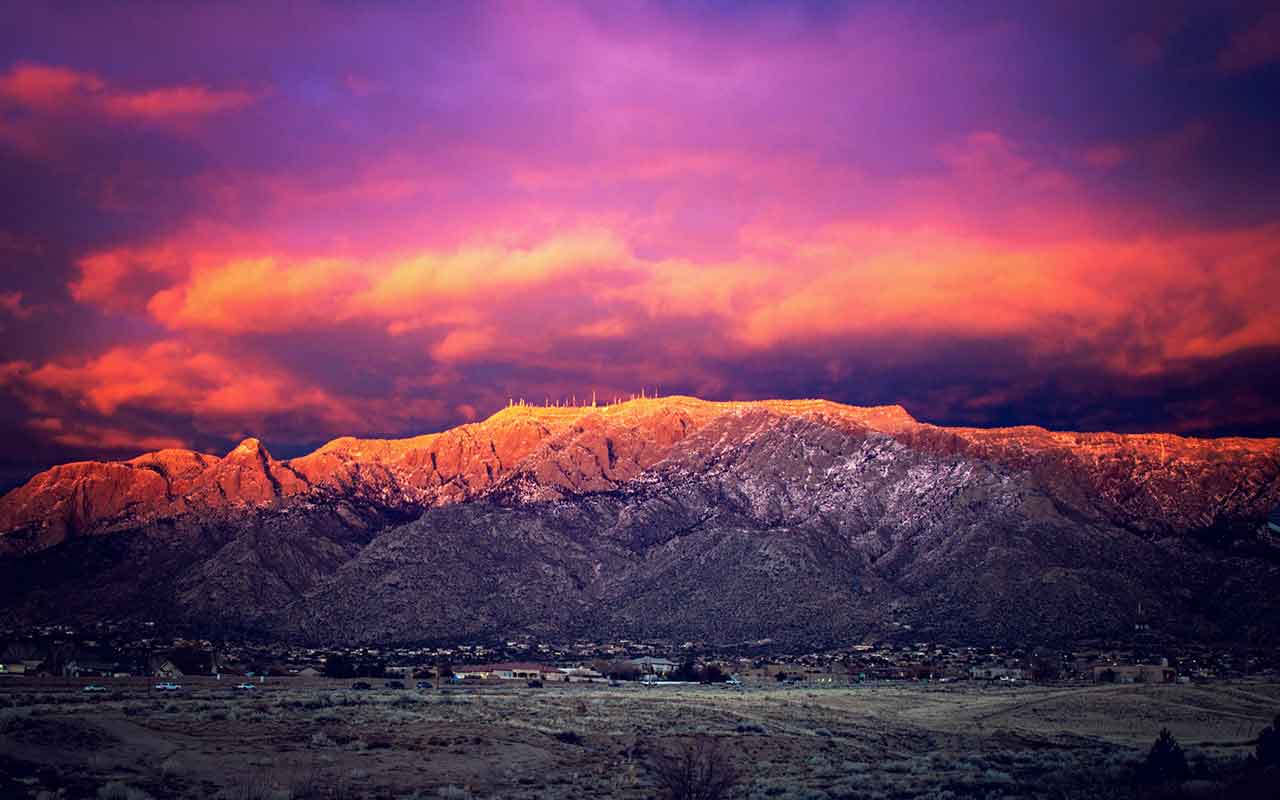
Albuquerque, N.M.
- City population: 556,718
- Share of population 65+: 14.2%
- Cost of living for retirees: 3.1% below the national average
- Average income for population 65+: $49,684
- Community score: 57.5
- State's tax rating for retirees: Least Tax Friendly
You can find a bright retirement in Albuquerque. The city tends to get 310 sunny days each year through all four seasons. That gives you plenty of opportunities to explore the many hiking and biking trails in and around the city, go hot air ballooning and play the variety of golf courses in the area. And when the sun goes down, local casinos—complete with concert venues, restaurants and more, along with table games, slots and bingo—help energize the local nightlife.
All that comes with below-average costs, but also below-average incomes. And many people aren't able to strike a balance: The poverty rate in Albuquerque among residents age 65 and up is 9.9%, compared with 9.3% for the U.S., but better than the 11.9% rate for New Mexico.
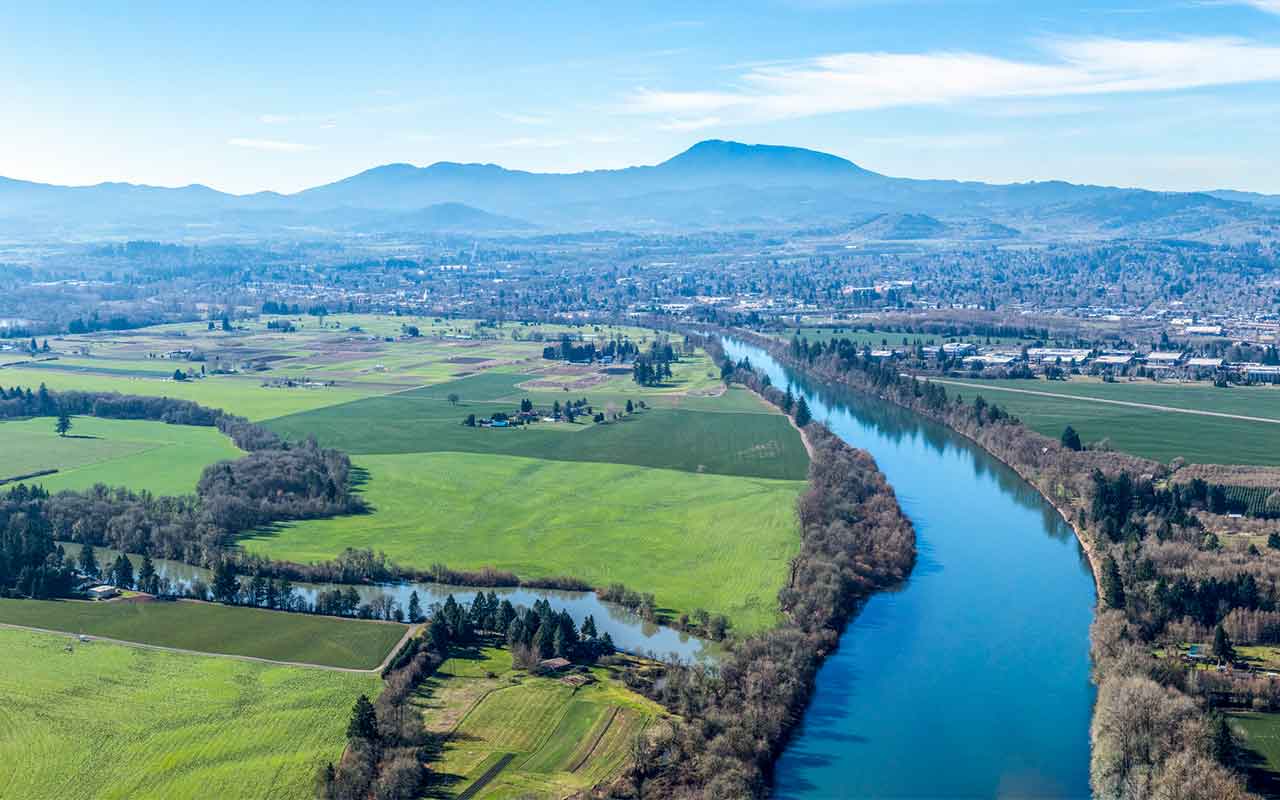
Corvallis, Ore.
- City population: 56,224
- Share of population 65+: 11.5%
- Cost of living for retirees: n/a
- Average income for population 65+: n/a
- Community score: n/a
- State's tax rating for retirees: Not Tax Friendly
The small city of Corvallis, located about 85 miles south of popular Portland, offers a similarly laidback lifestyle, but with smaller crowds and relatively lower costs. The overall cost of living is 19.8% above the national average—still pricey to be sure, but much more affordable than Portland's living costs at 47.8% above average. And average incomes are comparable at $68,589 a year in Corvallis and $68,125 in Portland for all residents.
Beyond financials, the area has plenty to recommend itself. You can enjoy the great outdoors, hiking or biking along the more than 60 miles of surrounding trails, observing the local wildlife, or taking advantage of nearby fishing, kayaking and swimming spots. You can also indulge in the more intoxicating offerings of the area. Coravllis is home to more than a dozen wineries—naturally, being in the heart of the Willamette Valley—as well as four craft distillers for whiskey, vodka and more and six breweries right in town.

Knoxville, Tenn.
- City population: 184,465
- Share of population 65+: 13.2%
- Cost of living for retirees: 17.1% below the national average
- Average income for population 65+: $46,685
- Community score: 64.2
- State's tax rating for retirees: Tax Friendly
The Volunteer State, which we rank as the fifth-best in the nation for retirement, is a good choice for retiree nest eggs of all sizes. On top of its friendly-tax status, most parts of Tennessee have below-average living costs across the board for retired residents.
Knoxville is particularly affordable for retirees, compared with, say, Nashville, where living costs among retired people are about the same as the national average. Housing costs for retirees in Knoxville are the biggest factor bringing down costs, at nearly 30% below the national average. The city's median home value is just $173,900 versus $262,900 in Nashville and $229,000 throughout the country. Indeed, Knoxville is one of the cheapest U.S. cities to live in. Still, being the gateway to the Great Smoky Mountains and home to the University of Tennessee, the city is rich in activities and attractions to fill your retirement years.
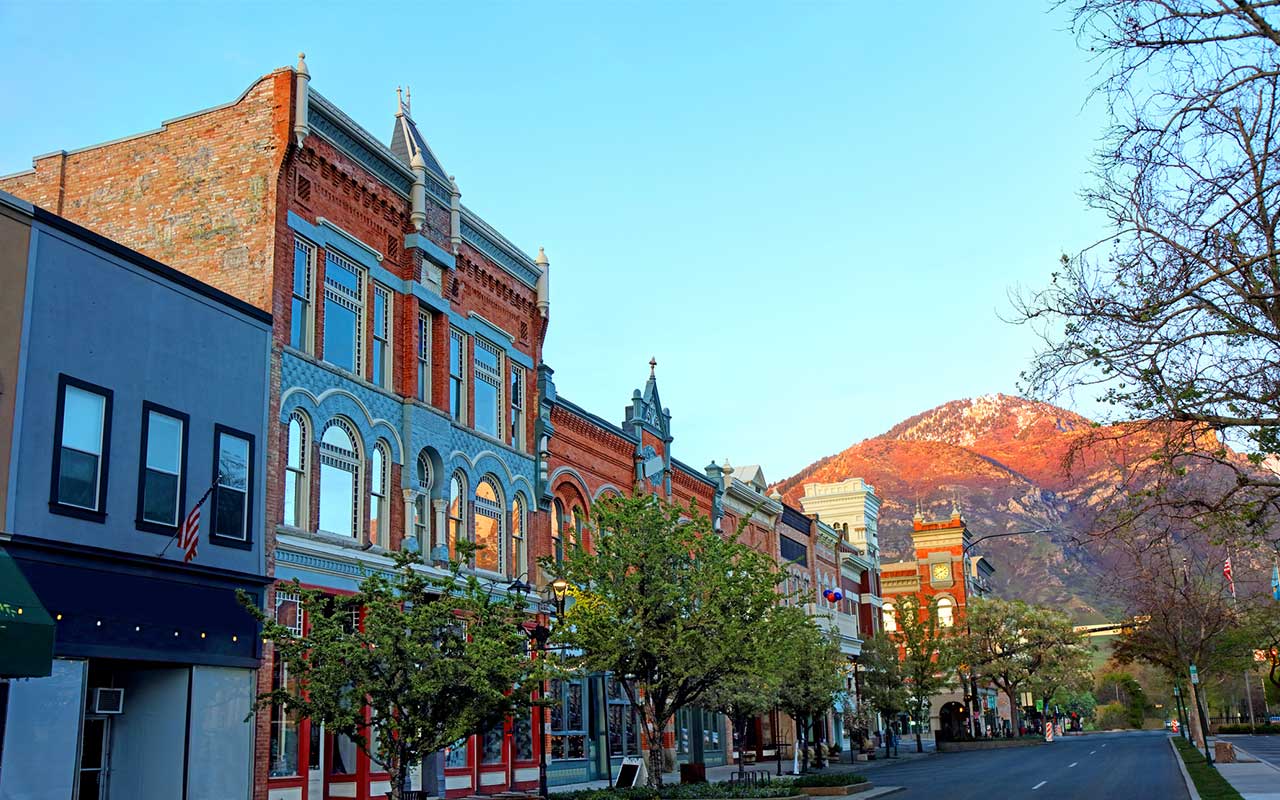
Provo, Utah
- City population: 116,199
- Share of population 65+: 6.0%
- Cost of living for retirees: 1.7% below the national average
- Average income for population 65+: n/a
- Community score: 64.7
- State's tax rating for retirees: Least Tax Friendly
The Beehive State, 10th in our 2018 rankings of the best states for retirement, is a sweet spot for active retirees. And Provo, with mountain peaks within the city limits and Utah Lake on its doorstep, is particularly buzz-worthy. Brigham Young University offers intellectual stimulation to complement the physical activity. Plus, living costs are low while incomes are high, at an average $97,958 a year for residents age 60 and up.
Another feather in its cap: The Milken Institute rates Provo as the best large city for successful aging, noting the area's vibrant economy and safety, as well as the population's healthy lifestyles and high levels of volunteering among older adults. The metro area also has an abundance of health care facilities, about 32 establishments per 1,000 seniors compared with about 19 per 1,000 seniors in the U.S.
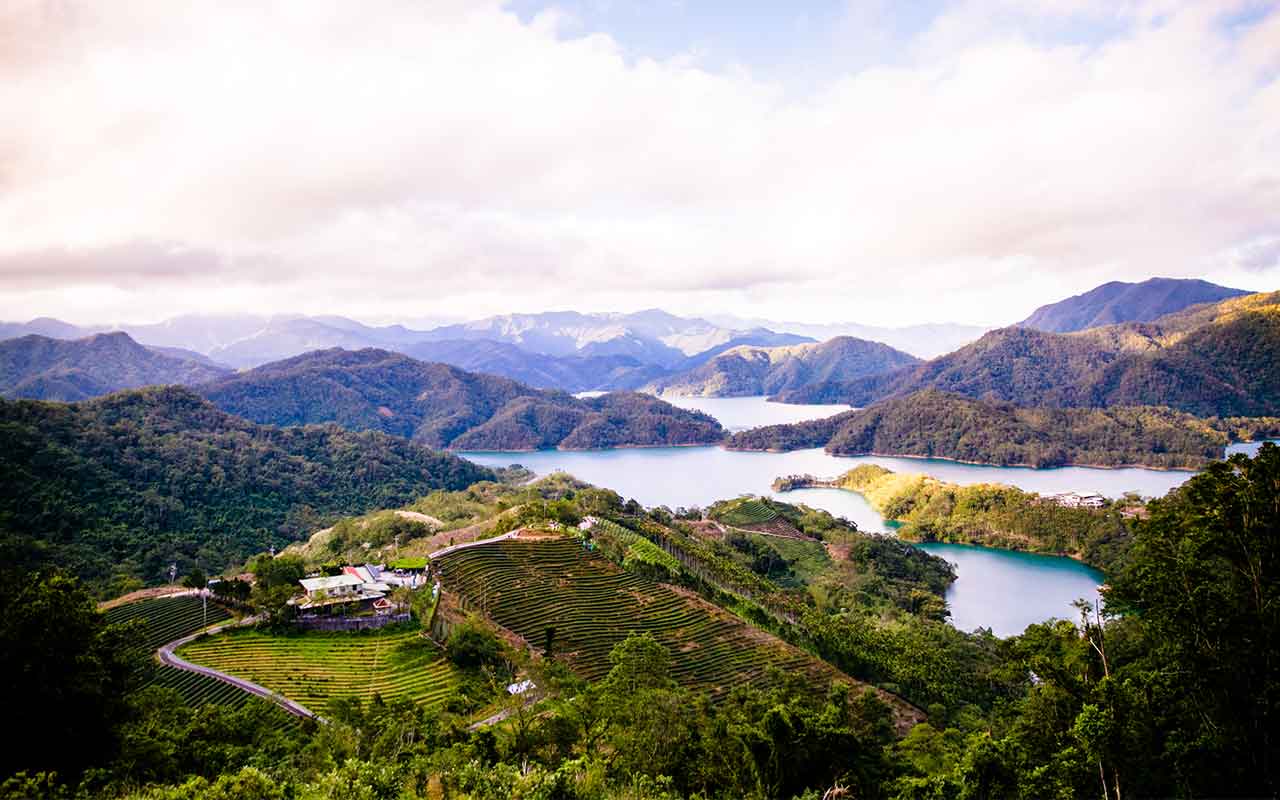
Burlington, Vt.
- City population: 42,453
- Share of population 65+: 10.7%
- Cost of living for retirees: 16.4% above the national average
- Average income for population 65+: n/a
- Community score: 64.2
- State's tax rating for retirees: Least Tax Friendly
This small mountain city on the shores of Lake Champlain is a picturesque setting for tree-hugging retirees. Outdoor recreation is plentiful with miles of hiking and biking paths, nearby beaches where you can swim, kayak or paddleboard in the warmer months, and numerous skiing options in the area. An eco-friendly vibe permeates the town, from the businesses bolstering the city's economy, such as household-products maker Seventh Generation, to the local food movement feeding the neighborhood.
Unfortunately, being green isn't always easy on your wallet. Taxes and living costs in this area are high. While the median home value is a low $206,000 in the Green Mountain State, compared with the median $229,000 for the U.S., it climbs to $326,500 in Burlington. A private room in a metro area nursing home costs a median $11,498 a month, compared with $8,365 a month for the U.S. At least you can save money on academic pursuits. The University of Vermont will cover tuition costs for state residents age 65 and older who wish to take a class, even if it's for credit.
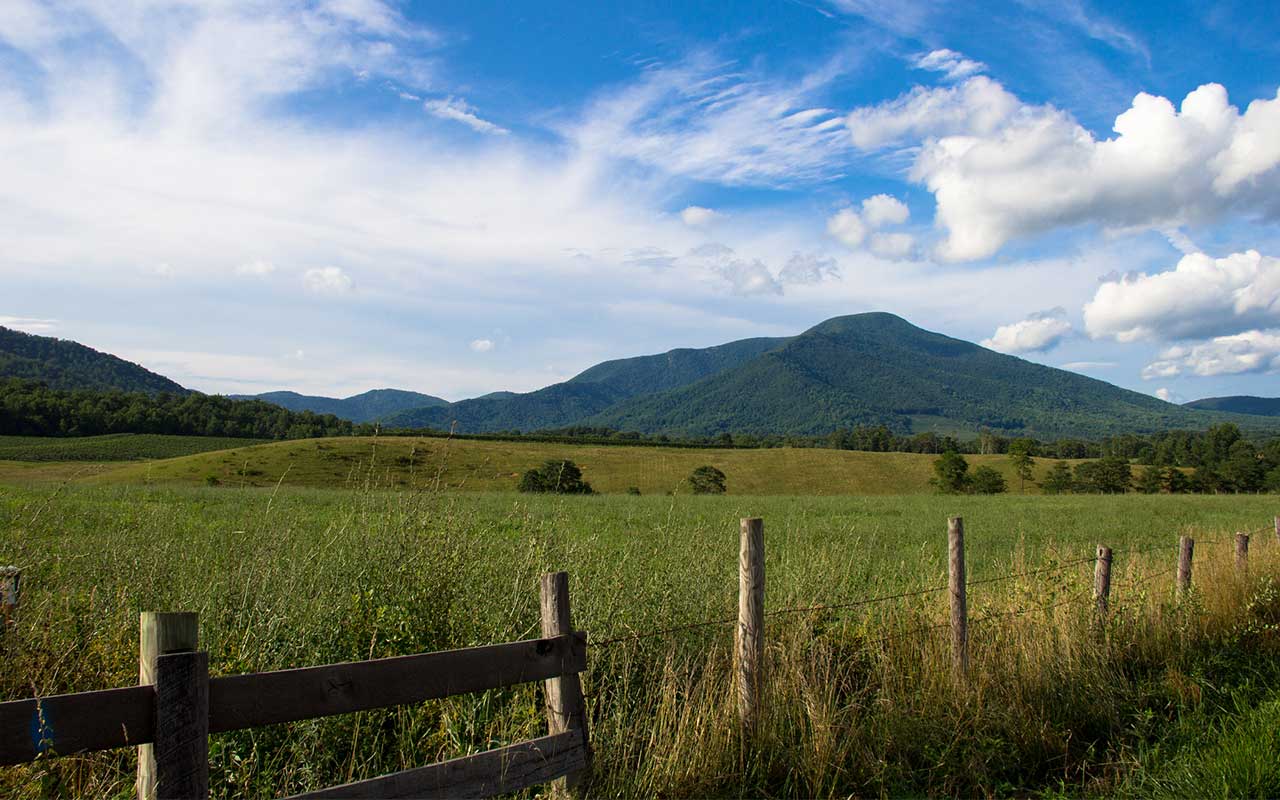
Charlottesville, Va.
- City population: 46,487
- Share of population 65+: 10.4%
- Cost of living for retirees: 0.2% below the national average
- Average income for population 65+: n/a
- Community score: 66.0
- State's tax rating for retirees: Tax Friendly
Renaissance man Thomas Jefferson laid the foundation for the well-rounded city his hometown has become. From his University of Virginia's hollering Hoos to the artists on the downtown promenade, the Charlottesville community is an unexpected blend of Southern charm and liberal edge, a nice choice for a range of retiree personalities. And beyond the college campus and city center, you can find plenty of options for outdoor recreation in the foothills of the Blue Ridge Mountains, including more than 100 miles of of the Appalachian Trail in nearby Shenandoah National Park.
In August 2017, Charlottesville captured national attention when a gathering of white nationalists to protest the removal of a monument to Robert E. Lee turned into a violent rally, injuring dozens of counter-protesters and killing one, Heather Heyer. In general though, the city's violent crime rate is a low 175.4 reported incidents per 100,000 residents, compared with a 297.8 rate for all U.S. cities of similar size, according to the FBI. Charlottesville also ranks fifth for overall well-being, out of all 187 metro areas included in the Gallup-Sharecare Well-Being Index, with above-average scores in all categories, including physical health and resident satisfaction.

Richland, Wash.
- City population: 53,991
- Share of population 65+: 15.5%
- Cost of living for retirees: 1.7% below the national average
- Average income for population 65+: $70,059
- Community score: 65.1
- State's tax rating for retirees: Tax Friendly
Richland's metro area includes Kennewick, both of which qualify as great retirement destinations. But the smaller of the two, Richland, has an older population with a higher average income (Kennewick's is $57,989) and lower poverty rate (7.6% compared with 8.3% in Kennwick—both lower than the national poverty rate of 9.3% for people age 65 and older).
Whether you're partial to exploring the great outdoors or focusing on wine country, you have plenty of options—you don't even have to choose one over the other. You can enjoy boating and fishing on the Columbia, Yakima and Snake Rivers, and hiking or biking on the 23-mile Sacagawea Trail. Mount Rainier National Park is about 150 miles away, but you can find plenty of peaks, including Badger Mountain, Candy Mountain and Jump Off Joe Butte, nearby. There are also more than 200 wineries within a 50-mile radius, offering beautiful views and many wines to sample.

Morgantown, W. Va.
- City population: 30,099
- Share of population 65+: 9.4%
- Cost of living for retirees: 7.2% below the national average
- Average income for population 65+: n/a
- Community score: n/a
- State's tax rating for retirees: Not Tax Friendly
West Virginia University offers a number of benefits to older Morgantown residents. If you're age 65 and up, you can take WVU courses, for credit or not, at a discount. Or if you're 50 or older, you can join the local chapter of the Osher Lifelong Learning Institute. A $30 annual membership gets you access to interest groups, trips, social gatherings and program classes, including local and international history, music, computers and yoga.
The University also helps boost local health care services with its many medical facilities, including the Eye Institute, Heart Institute and Ruby Memorial Hospital. The Milken Institute actually credits the area's abundance medical services—including orthopedic surgeons, primary-care clinicians and home-health-care professionals—for contributing to Morgantown's high ranking (18th) among small metro areas.
Beyond the University, you can find a world of outdoor recreation with ample opportunities for hiking, biking, fishing, birding, whitewater rafting and more throughout the hills and valleys of Appalachia.

Cheyenne, Wyo.
- City population: 62,986
- Share of population 65+: 15.3%
- Cost of living for retirees: 8.7% below the national average
- Average income for population 65+: $44,323
- Community score: n/a
- State's tax rating for retirees: Most Tax Friendly
Loner types should love the Cowboy State. It has a population of 583,200—that's just about six people per square mile. (By comparison, the country's smallest state in size, Rhode Island, hosts more than a million people—about 871 people per square mile.) But while Cheyenne is hardly a bustling metropolis by headcount, the population density is much higher at about 2,200 people per square mile.
Upside of the relative crowds of the capital city: no lack of activities. You have plenty of outdoor diversions, such as miles of trails for hiking, biking and horseback riding; fishing and boating; and birding and other wildlife viewing. Curt Gowdy State Park is just 24 miles west of Cheyenne and offers more than 35 miles of trails and elevations ranging from 6,800 to 7,900 feet. Train aficionados can enjoy the area's railroad history and displays of locomotives, including the world's largest steam engine (also retired). Another big local attraction: Every summer since 1897, Cheyenne hosts the world's largest outdoor rodeo and Western celebration, Frontier Days, now a 10-day event.

How We Picked the Best Places for Retirement
To pinpoint one great retirement destination in each state, we weighed a number of factors:
- Cost of living for retirees for major metropolitan and micropolitan statistical areas, with data provided by the Council for Community and Economic Research, includes overall costs, housing, food and groceries, transportation, utilities, health care and miscellaneous expenses.
- Household incomes, poverty rates and number of health care facilities are from the U.S. Census Bureau.
- Community well-being and physical well-being scores are provided by digital health company Sharecare, in collaboration with Gallup. These are two of the five elements of well-being that make up the overall Gallup-Sharecare Well-Being Index. (The other three elements are purpose, social and financial well-being.) The index is calculated on a scale of 0 to 100 and based on more than 2.5 million nationally representative surveys. Community well-being is defined as "liking where you live, feeling safe and having pride in your community." Physical well-being is "having good health and enough energy to get things done daily." We display the community score for each place we chose.
- Population data, including the percentage of the population that is age 65 and older, is also provided by the Census Bureau. The figures are highlighted in these rankings for the benefit of readers, but were not factors in our methodology for ranking the best places to retire.
- Taxes on retirees, based on Kiplinger's Retiree Tax Map, which divides states into five categories: Most Tax Friendly, Tax Friendly, Mixed, Not Tax Friendly and Least Tax Friendly. This information is provided for the benefit of readers but was not factored into our selections within each state.
Get Kiplinger Today newsletter — free
Profit and prosper with the best of Kiplinger's advice on investing, taxes, retirement, personal finance and much more. Delivered daily. Enter your email in the box and click Sign Me Up.

Rapacon joined Kiplinger in October 2007 as a reporter with Kiplinger's Personal Finance magazine and became an online editor for Kiplinger.com in June 2010. She previously served as editor of the "Starting Out" column, focusing on personal finance advice for people in their twenties and thirties.
Before joining Kiplinger, Rapacon worked as a senior research associate at b2b publishing house Judy Diamond Associates. She holds a B.A. degree in English from the George Washington University.
-
 Stock Market Today: Stocks Gain on Tech, Auto Tariff Talk
Stock Market Today: Stocks Gain on Tech, Auto Tariff TalkThe Trump administration said late Friday that it will temporarily halt tariffs on some Chinese tech imports.
By Karee Venema
-
 Sam's Club Plans Aggressive Expansion: Discover Its New Locations
Sam's Club Plans Aggressive Expansion: Discover Its New LocationsSam's Club expansion plans will open up to 15 new stores each year. Learn where they plan to open in 2025.
By Sean Jackson
-
 What to Do With Your Tax Refund: 6 Ways to Bring Growth
What to Do With Your Tax Refund: 6 Ways to Bring GrowthUse your 2024 tax refund to boost short-term or long-term financial goals by putting it in one of these six places.
By Rachael Green
-
 What Does Medicare Not Cover? Eight Things You Should Know
What Does Medicare Not Cover? Eight Things You Should KnowHealthy Living on a Budget Medicare Part A and Part B leave gaps in your healthcare coverage. But Medicare Advantage has problems, too.
By Donna LeValley
-
 12 Great Places to Retire in the Midwest
12 Great Places to Retire in the MidwestPlaces to live Here are our retirement picks in the 12 midwestern states.
By Stacy Rapacon
-
 10 Cheapest Small Towns to Live In
10 Cheapest Small Towns to Live InThe cheapest small towns might not be for everyone, but their charms can make them the best places to live for plenty of folks.
By Dan Burrows
-
 Best Cold Weather Places to Retire
Best Cold Weather Places to RetirePlaces to live Some like it hot; others not so much. Here are the 12 best places to retire if you can't stand the heat.
By Stacy Rapacon
-
 15 Reasons You'll Regret an RV in Retirement
15 Reasons You'll Regret an RV in RetirementMaking Your Money Last Here's why you might regret an RV in retirement. RV-savvy retirees talk about the downsides of spending retirement in a motorhome, travel trailer, fifth wheel or other recreational vehicle.
By Bob Niedt
-
 The Cheapest Places To Retire in the US
The Cheapest Places To Retire in the USWhen you're trying to balance a fixed income with an enjoyable retirement, cost of living is a crucial factor to consider.
By Stacy Rapacon
-
 The Six Best Places to Retire in New England
The Six Best Places to Retire in New Englandplaces to live Thinking about a move to New England for retirement? Here are the best places to land for quality of life, affordability and other criteria.
By Stacy Rapacon
